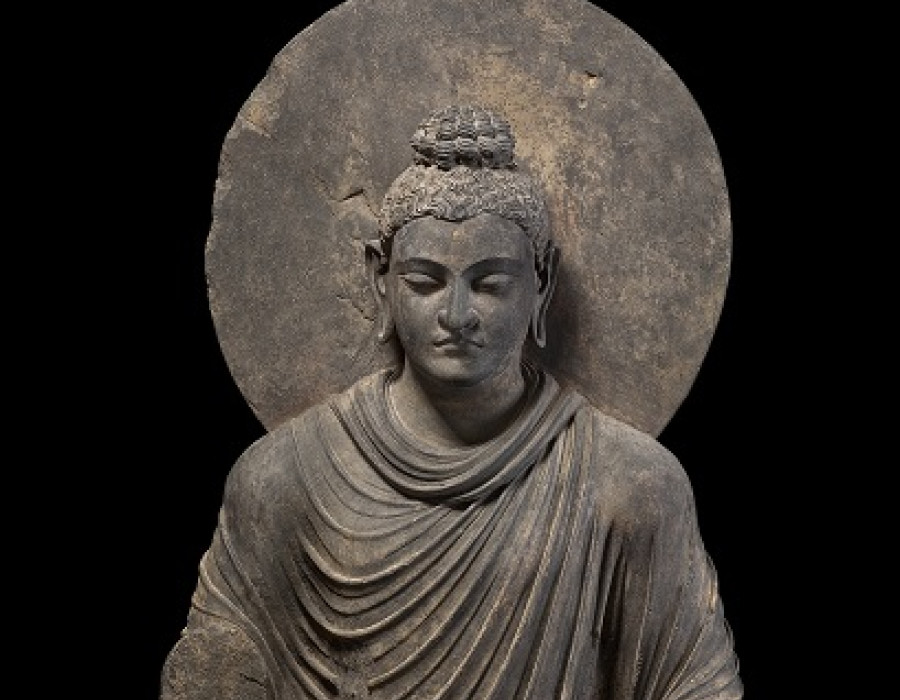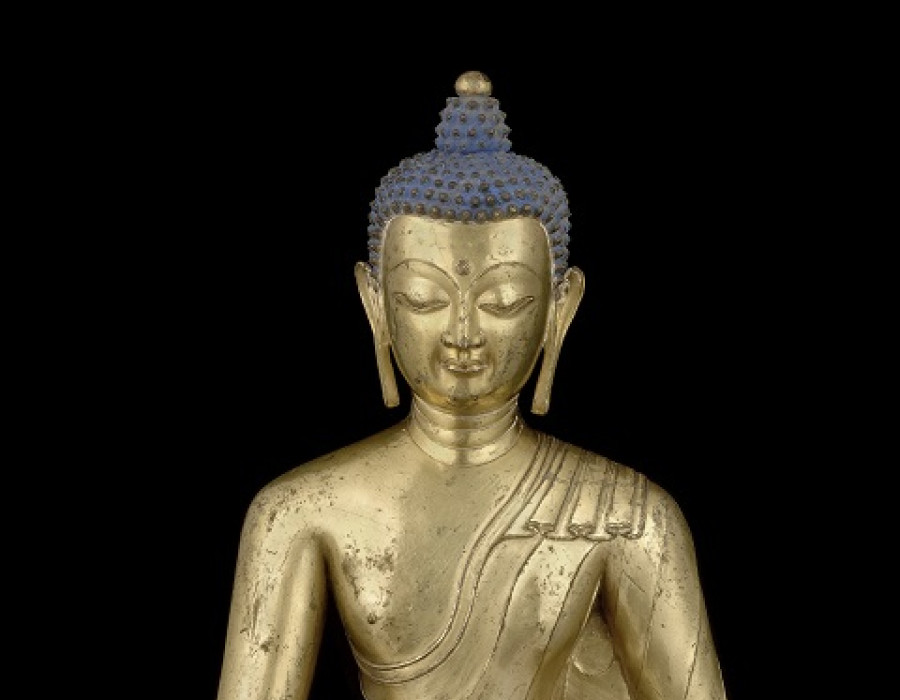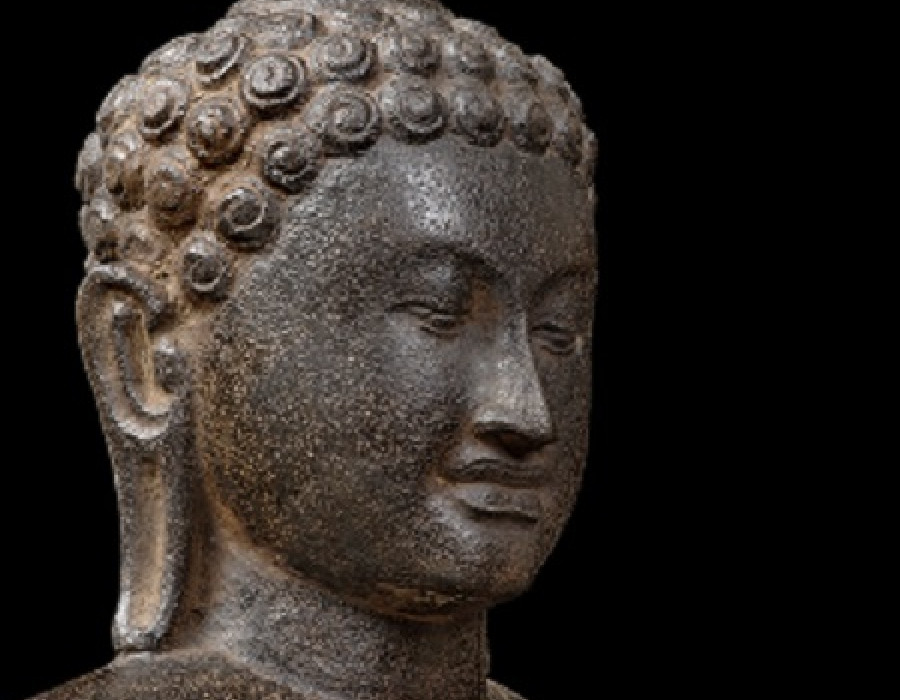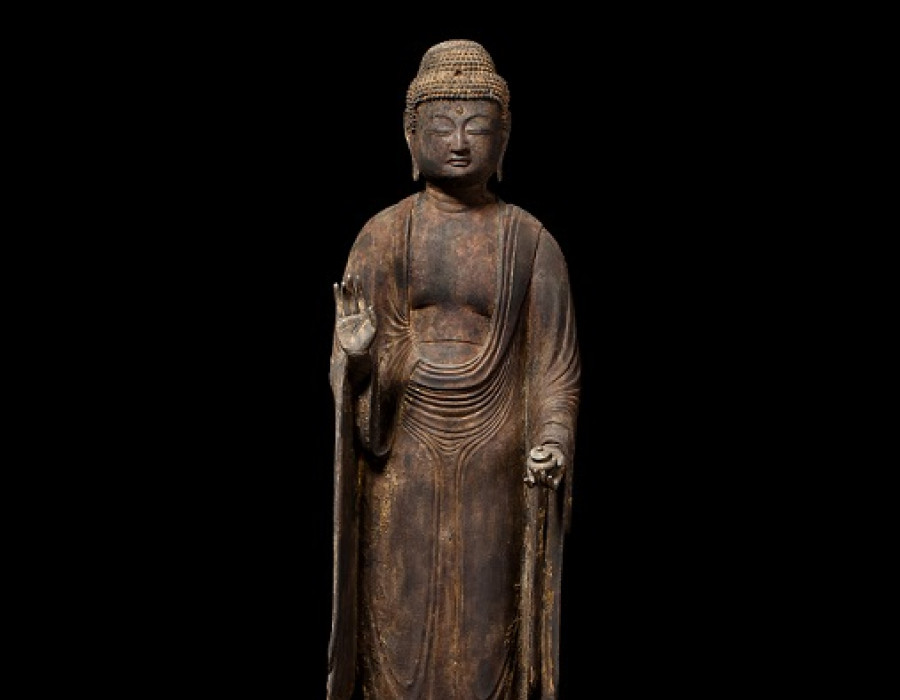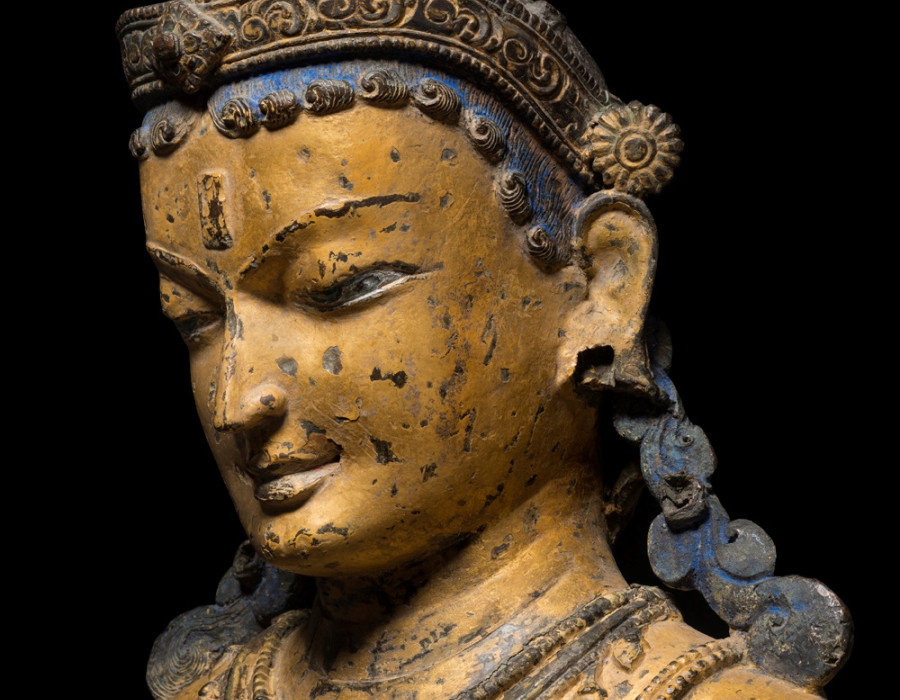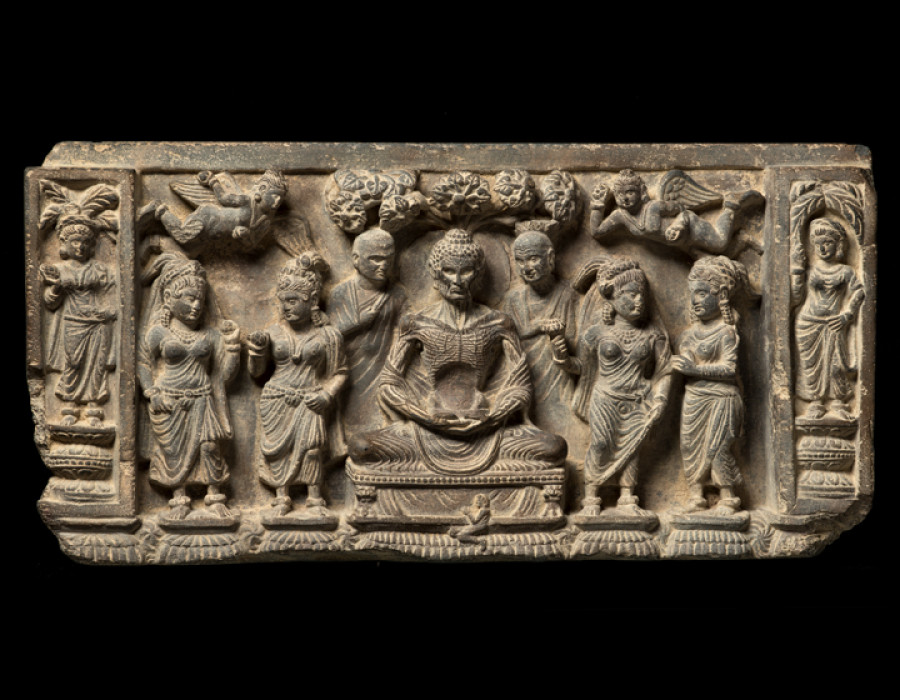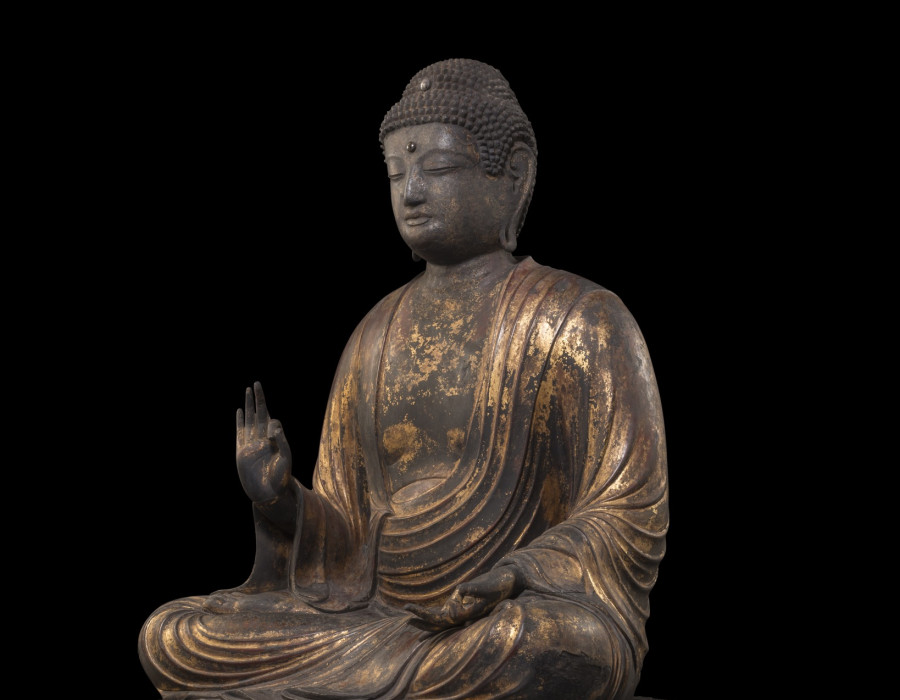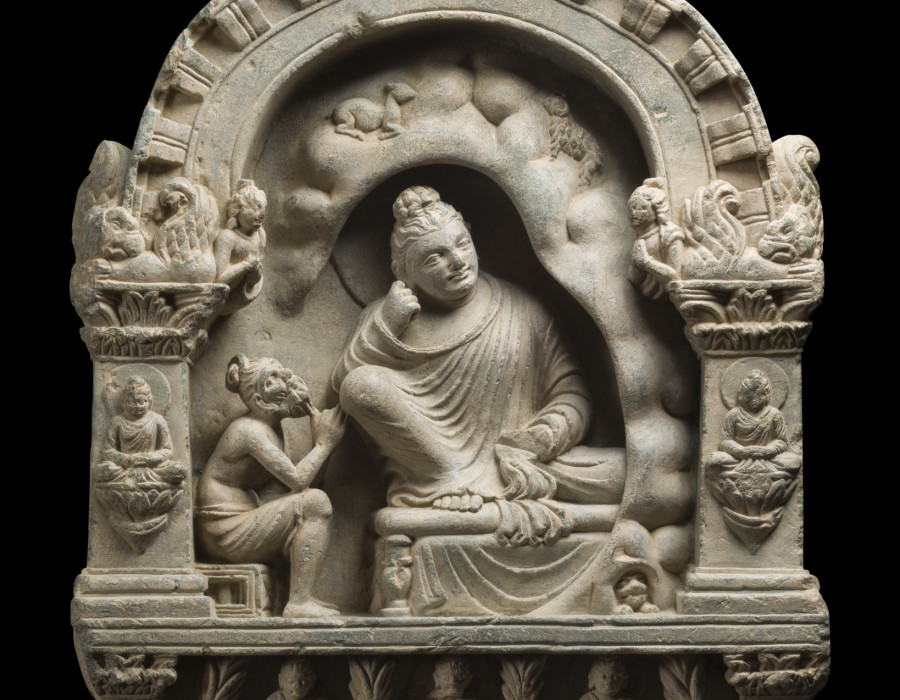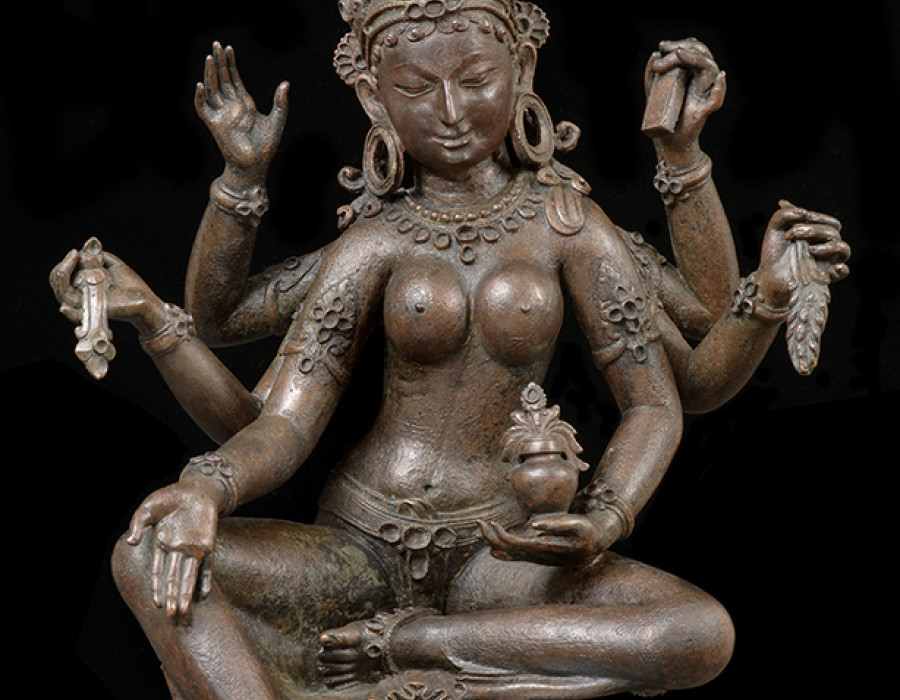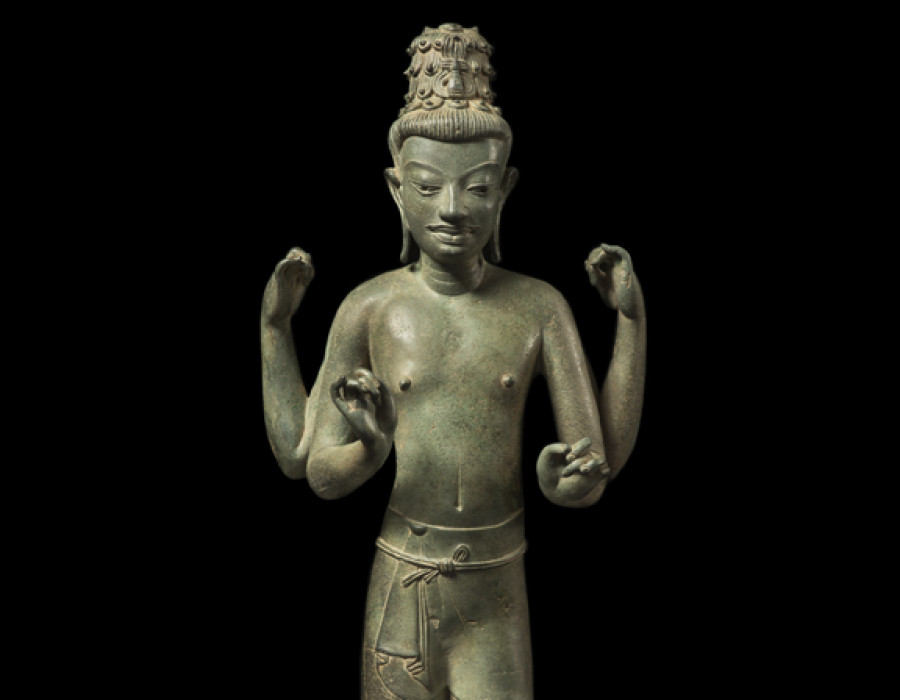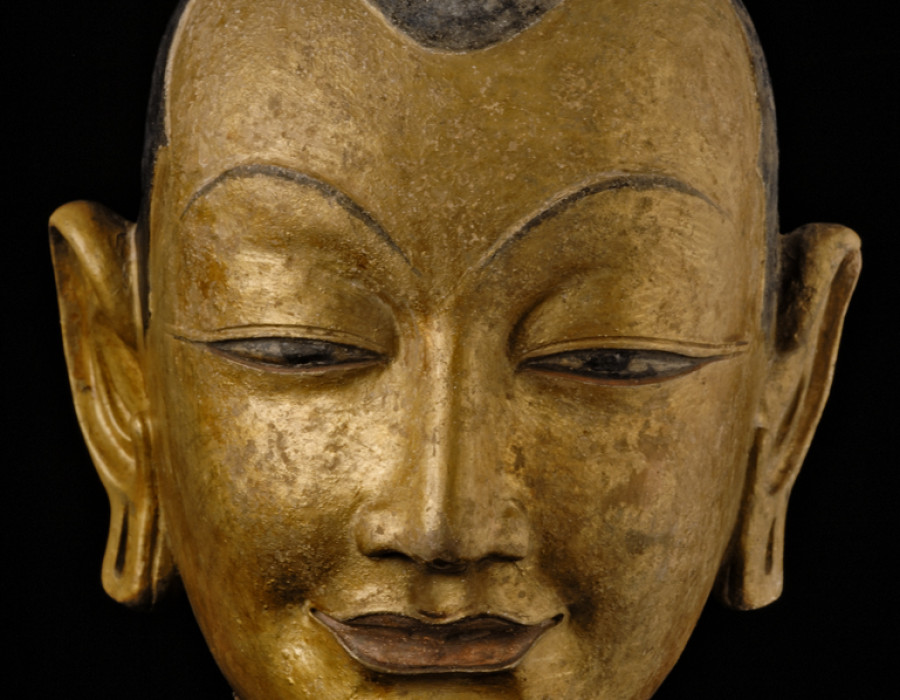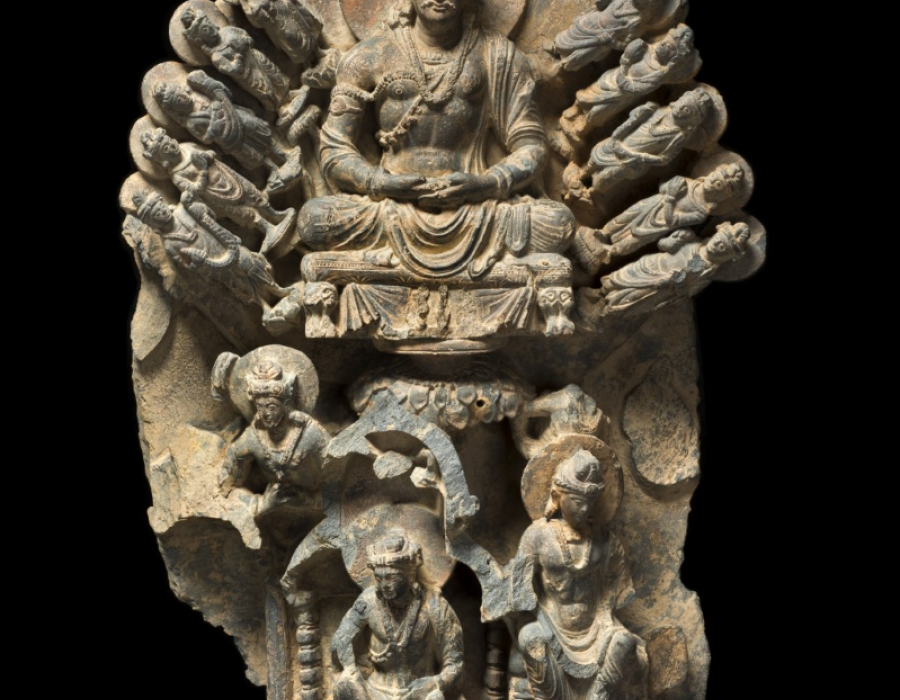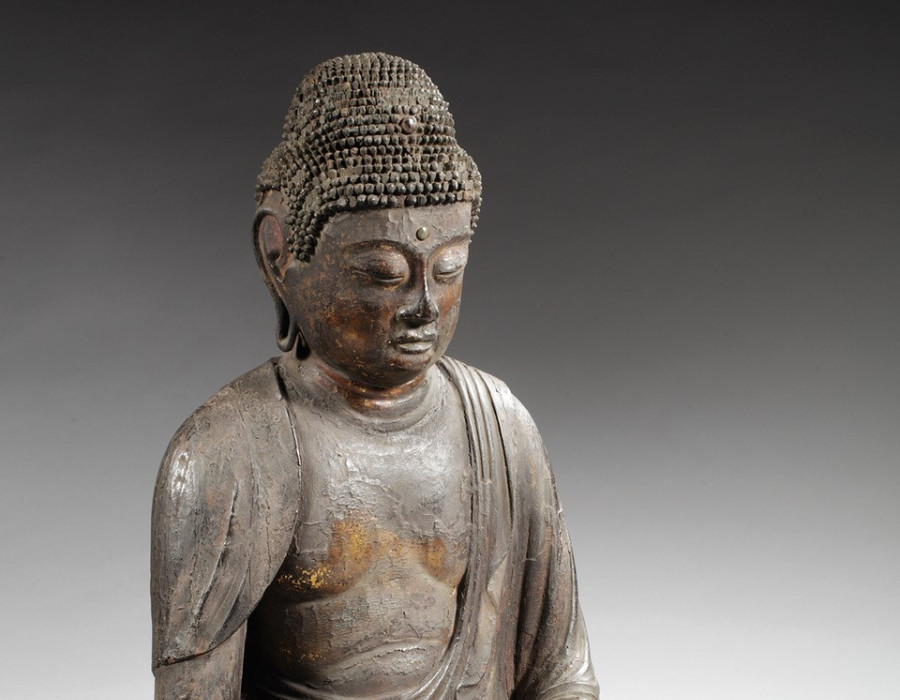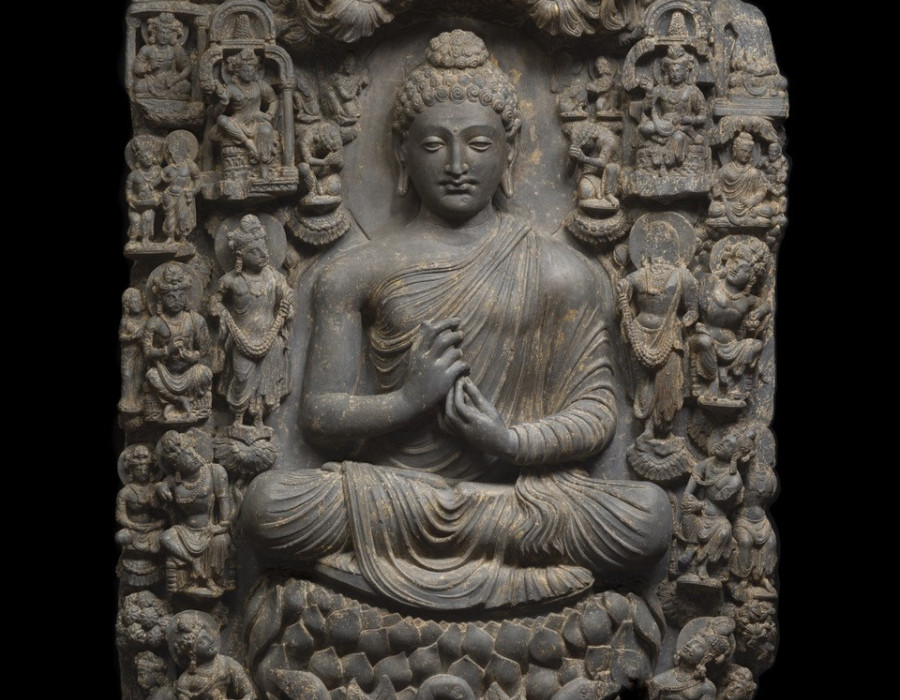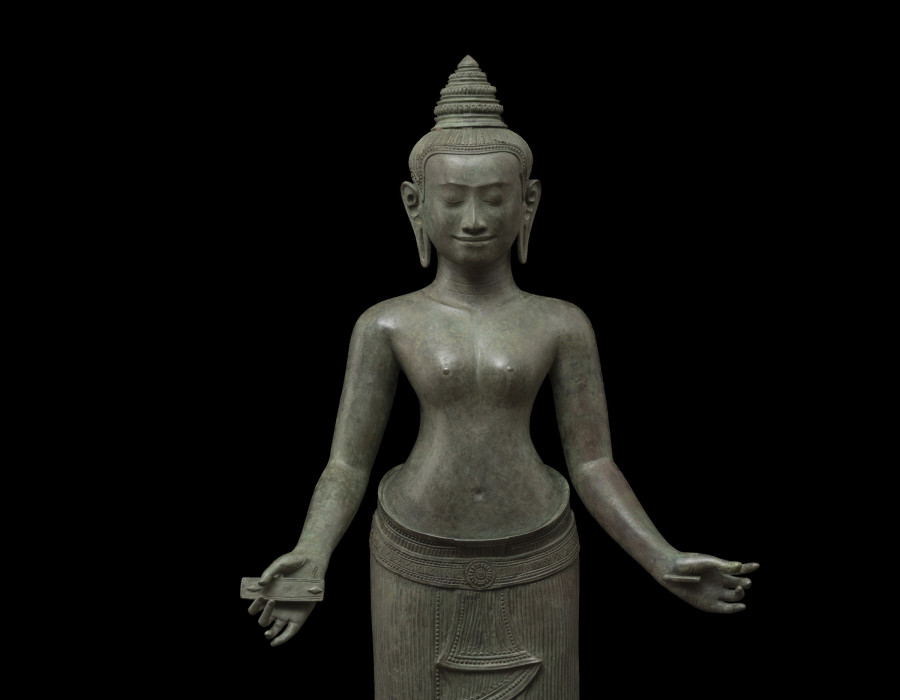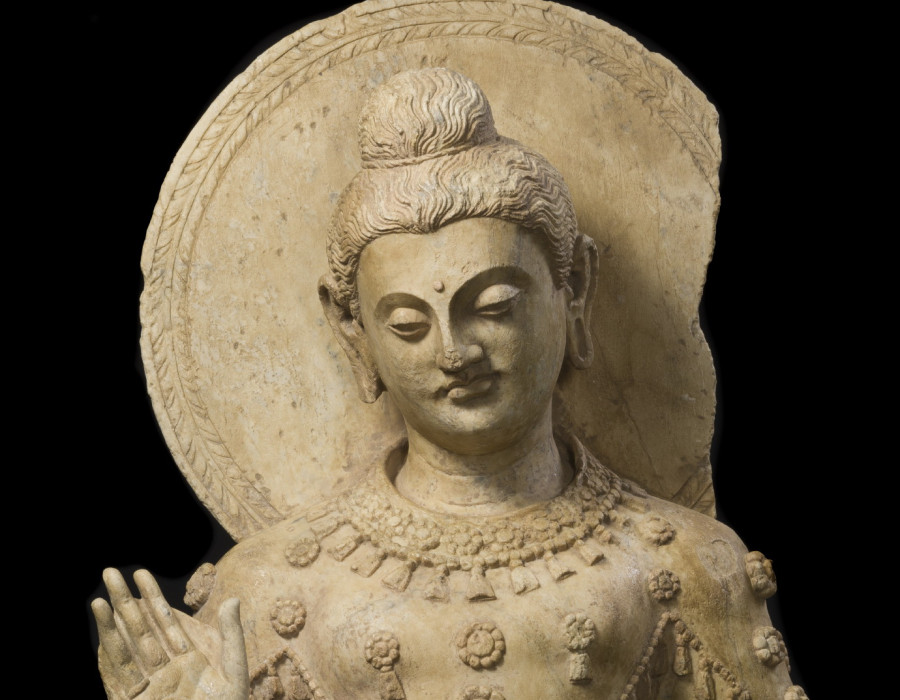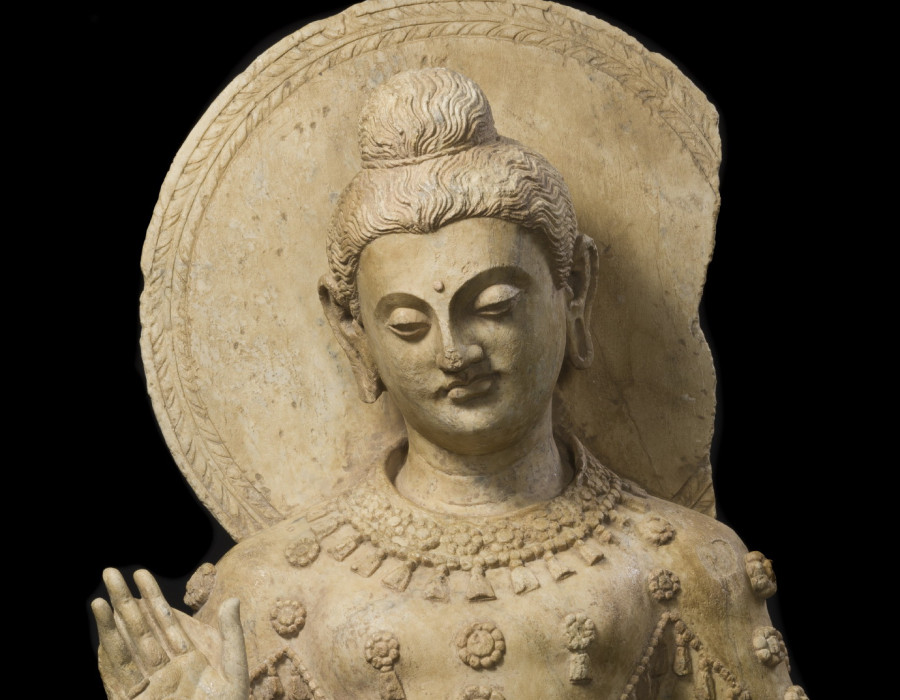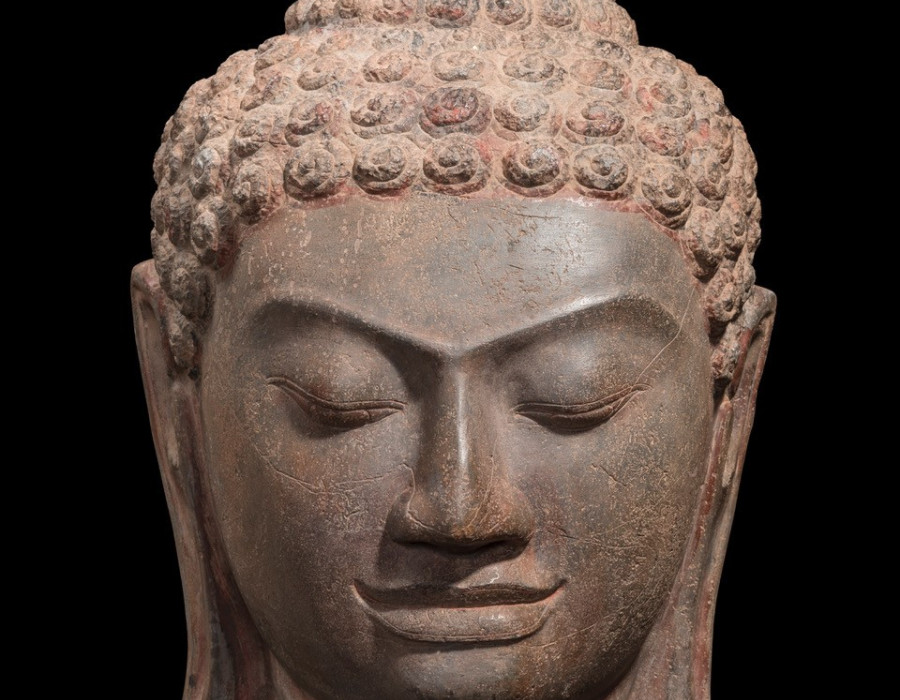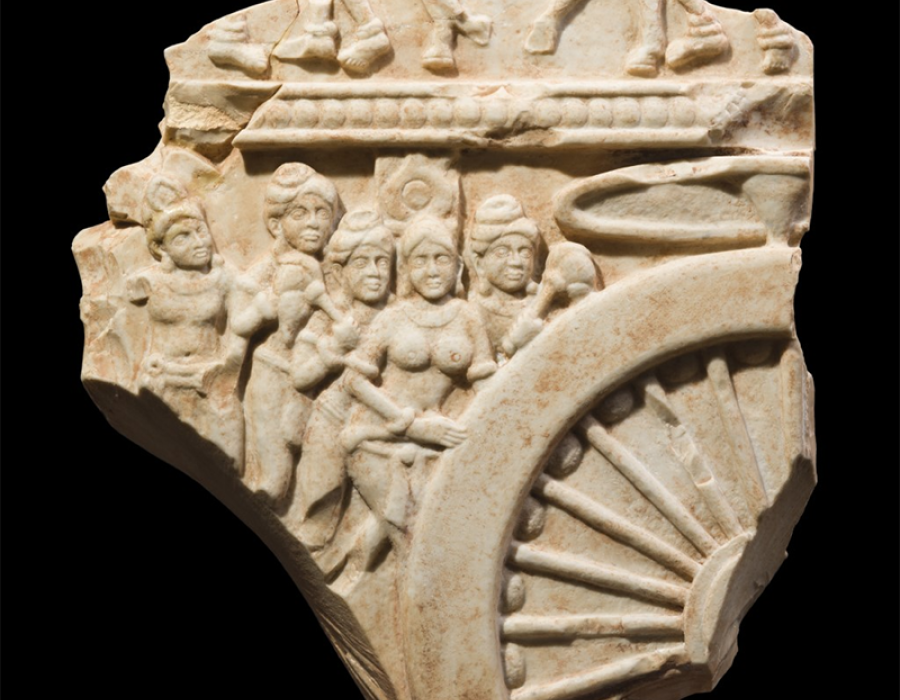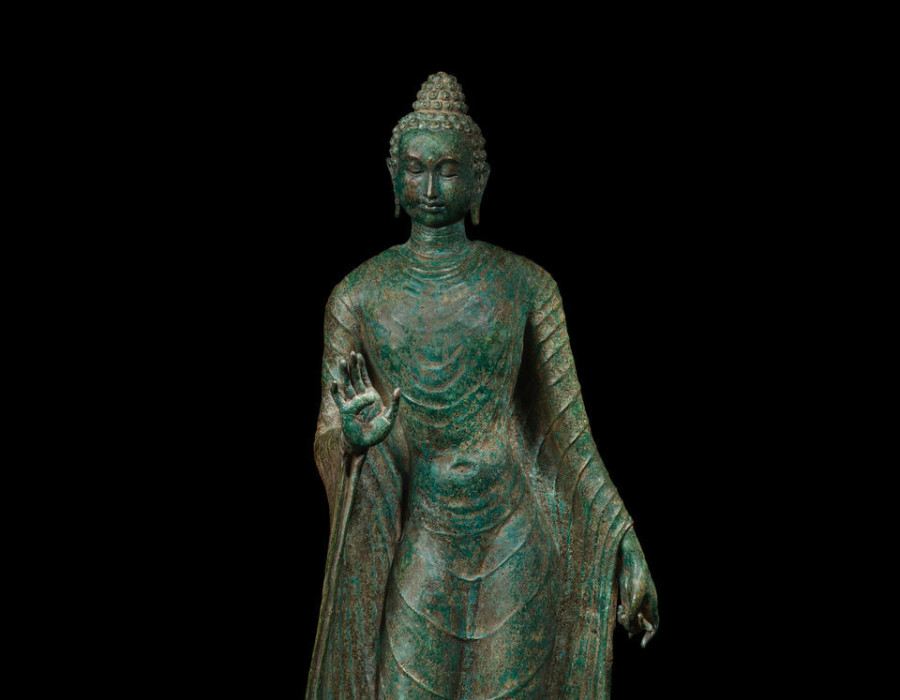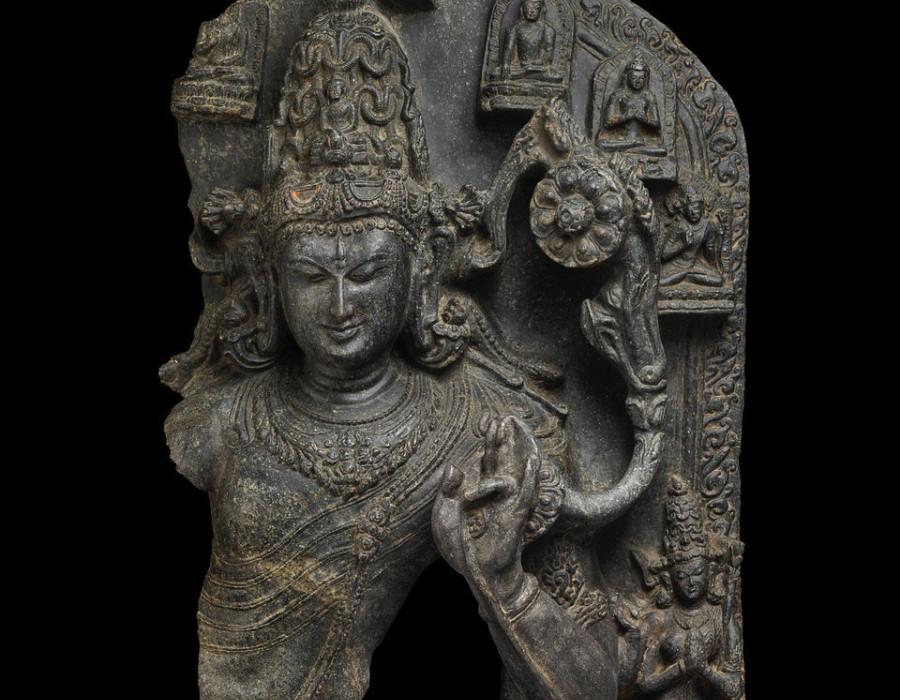
Martin Goodson
Images of Truth: Gandaran Bust of Buddha
3rd Century
The familiar image of the standing Buddha probably originated in Gandhara in the 1st/2nd century CE; from that region, straddling the present-day nations of Afghanistan and Pakistan, the form spread to every region permeated by Buddhism.
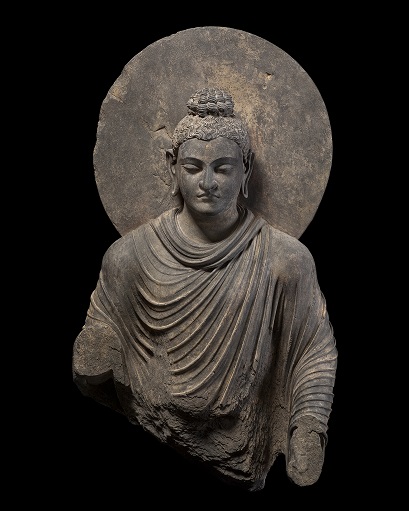
Gandaran Bust of Buddha
Bust of the Buddha
Gandhara
3rd century
Grey Schist with traces of gilding
Height 90cm
The familiar image of the standing Buddha probably originated in Gandhara in the 1st/2nd century CE; from that region, straddling the present-day nations of Afghanistan and Pakistan, the form spread to every region permeated by Buddhism. Radiating spiritual knowledge and serenity, he is portrayed as a gentle figure of authority, intently listening to the thoughts and prayers of his devotees.
This elegant fragment was once a fine standing image, probably placed alone in an architectural niche in a shrine or temple. Standing and seated Buddha statues were created for the monasteries of the Gandhara region where travellers resting on their long journeys along the Silk Roads were offered the chance to study the Buddhist faith. The natural majesty of the sculpture is achieved through the purity of the face together with the classical balance of the muscular form that is barely concealed beneath the folds of his robe. In its fragmentary state, one witnesses the Buddha apparently rising out of the stone he is fashioned from. In Gandharan art, the Buddha’s physical beauty is a metaphor for his extraordinary spiritual knowledge and understanding; sculptures such as this were designed to influence and inspire those who saw them.
....................................
I tell you that there is no making an end of suffering… without reaching the end of the world. Yet it is just within this fathom-long body, with its perception & intellect, that I declare that there is the world, the origination of the world, the cessation of the world, and the path of practice leading to the cessation of the world."
"Rohitassa Sutta: To Rohitassa" (AN 4.45), translated from the Pali by Thanissaro Bhikkhu. Access to Insight, 21 April 2011[adapted]
In Buddhism there is no separation between body and mind; neither is there between the material and the spiritual. Although there are long traditions, both East and West, of mortifying the flesh to exalt the spirit, the Buddha found in the end these practices to be unprofitable. Neither did he find indulgence of the body to be of lasting good for solving the problem which lies at the heart of the Buddhist path – "Suffering and the way out of suffering." So he taught the Middle Way between the two extremes of asceticism and indulgence.
In Buddhist practices, such as sitting meditation or meditation within daily activities, the body is paramount. There is a close link between body & heart-mind; which can easily be demonstrated. The body flashes whatever is going on in the heart. Just look and see! One who is bored, another who is angry or agitated, this one who is nervous, that one who is sleepy – there is no need to ask; it is there before one’s eyes. A heart-mind that is out of sorts shows itself through a body which is also restless, unbalanced and as the idiom puts it ‘all over the place’.
But this link between body and heart-mind is a two-way street. Just as the body flashes what is going on in the heart so by collecting and cultivating ‘good form’ with the body the heart too becomes collected and more balanced.
Those people who train their bodies, such as dancers, singers or athletes will know this fact intimately. If the physical form is absent there is little chance of giving the best performance.
Hence, why artists and artisans took great care in the production of the Buddha-form because the eye takes in, not just the parts of the body but, the qualities it conveys. Such traditional forms were handed down and were based, not on some fancy idea of the artist, but rather on the experience of the power of such forms.
As one beholds such a form something of its quality begins to come across because to -look deeply into - means to become what is seen. There is a connection here-and-now to the heart which carved these forms. Even though the hands that made the form may lie centuries distant the heart-mind is here-now and exists for all time. Were this not so, then such works could not speak to us – and they do.
Images of Truth
Buddhist art and iconography

